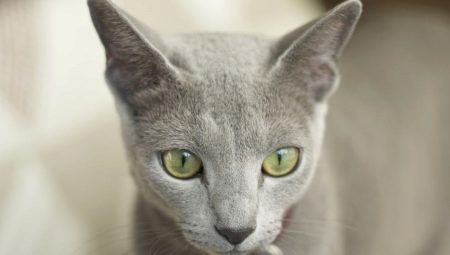True love for cats makes many of their owners put up with shreds of wool in the house and often forces them to clean. However, today there are breeds of cats called non-shedding. Is this possible, and do pets have any deviations due to this feature?
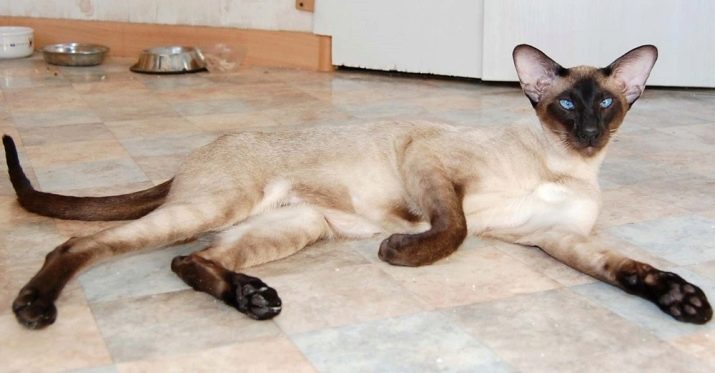
Features, pros and cons
Before talking about the characteristics of non-shedding cats, you should understand what is the process of molting an animal. This is the death of the old fur and, accordingly, its loss. It is logical that all animals with fur are subject to molting. In longhair and pets with a dense undercoat, this process occurs more intensively. Separately, it is worth mentioning about animals of the second type - the hair of the undercoat is thin, falling out, they fly literally throughout the house.
In the wild, this process occurs twice a year - with the beginning of the spring and autumn period, which is associated with the need to replace the fur coat with a warmer or, conversely, light one.
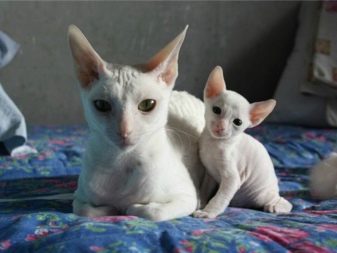
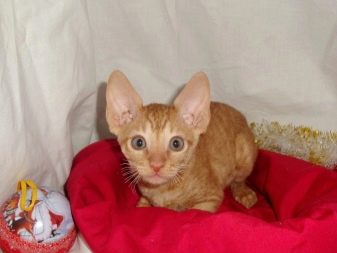
However, in apartment pets, due to a lesser dependence on time cycles, this process may be disrupted. In this case, molting lasts year-round. Not very shedding are animals with a short undercoat and a minimum amount of hair remaining, bald cats, cats with curly or wavy fur.
The advantage of non-shedding cats in the first place is the minimum amount of fur in the house, hypoallergenicity. It is important to understand that the allergy is not caused by the coat itself, but by a specific protein in the animal’s saliva. Licking his coat, the pet inevitably leaves this protein on the coat. It causes allergies. Some individuals give a greater allergic reaction, others less.In addition, an allergy can also occur in the secretion of sebaceous glands of cats.
The age of the animal also affects allergies - the older it is, the more allergies it gives. At the same time, it is worthwhile to understand that some shorthair individuals require special care for their skin, sweat, and can leave greasy stains on furniture and things. In addition, if we are talking about "naked" cats, it is important to take care of their thermoregulation - make sure that the pet does not freeze and does not overheat.
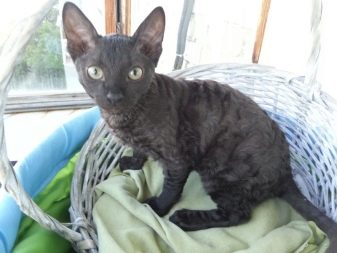

List of breeds
Sphinx
The obvious answer to the question, which cats are not prone to molting, will be sphinxes. First of all, these are St. Petersburg, Canadian and Don species of the breed. When crossing with them, they also received breeds that do not drop fur. These include the elf, Ukrainian Levka, delf, bambino. Representatives of this breed do not have a dense fur cover. Only individual few hairs, the length of which is not more than 2 mm. As a rule, even they occur in adults (after 2 years).
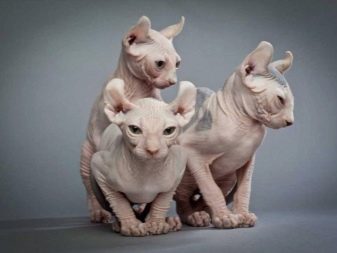
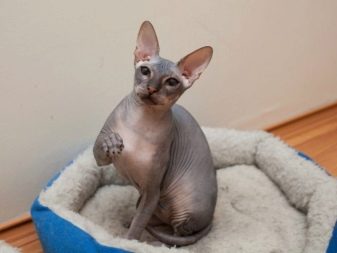
There are many subspecies of the sphinxes, however, they all belong to a particular group:
- The naked. Such individuals are born without fur and undercoat. They may not even have vibrissa (mustache, eyebrow). In winter, such cats often acquire rare fur of medium length.
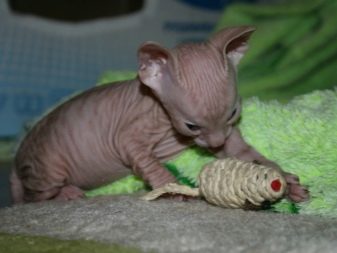
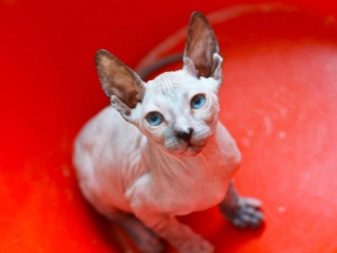
- Flock, velor.Such individuals have a small, pleasant to the touch undercoat. By name, it is easy to guess that it resembles velor fabric. Some individuals have a fluff throughout the body, while others only on the muzzle and in certain parts of the body. The lack of fur for a number of owners is an advantage, but at the same time is associated with additional requirements for care. These animals freeze, their skin is easily dry (especially during the heating of apartments), in addition, brown sweat appears on the skin, which must be removed with soft napkins.
If this rule is not observed (as well as errors in nutrition), irritation and acne appear on the skin. Once a week, sphinxes are shown water procedures for which they do not have much love.
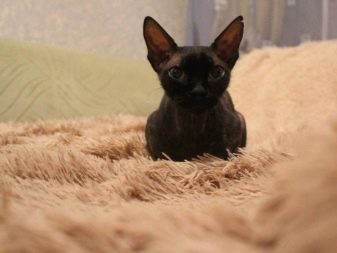
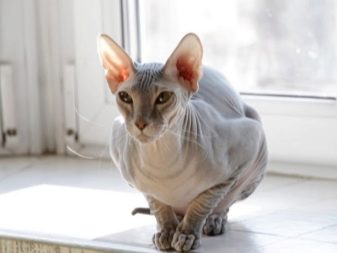
In addition, sphinxes can leave greasy sweat stains on furniture. Sphinxes are characterized by a specific smell (albeit barely perceptible). Some people do not notice him or are neutral about his appearance, for others he is intolerable.
Rex
Rex - the owners of a short and slightly wavy coat. Due to the fact that it fits snugly on the skin and does not have an undercoat, the cat does not fade. The breed has varieties, the most popular are:
- Devonian - It is considered hypoallergenic, almost does not smell, however, it needs frequent bathing, as the fur becomes greasy from skin secretions;
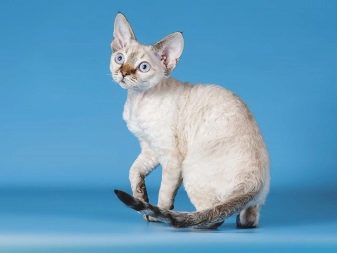
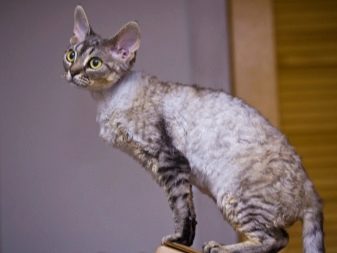
- cornish - has a rare undercoat, rather resembling fluff, they are also called alien cats for large eyes and an elongated face;
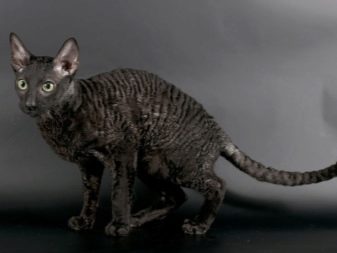
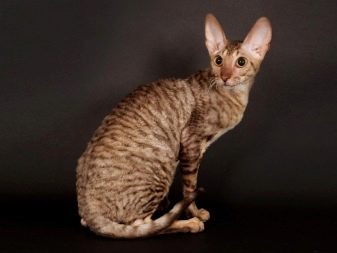
- laperm, ural, german, selkirs - there are both long-haired and short-haired individuals, what unites them is that the fur curls and resembles sheep’s wool.
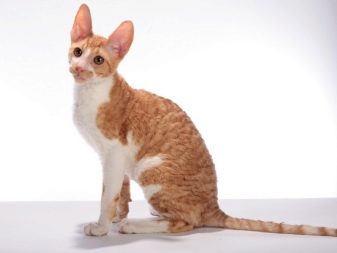
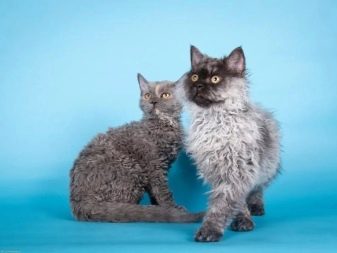
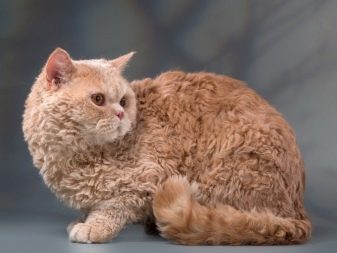

Rex is neatly sized small and elegant cats, their weight rarely exceeds 4-4.5 kg. To the touch, the wool resembles a noble suede.
Animals are characterized by a calm and kind disposition. Almost until old age they retain curiosity and playfulness. Unlike the sphinxes, Rex is less whimsical to care for - they do not need to bathe, insulate so often. Cats almost do not smell, do not require combing. But it is extremely important to monitor the pet’s diet - if it is disturbed, dark discharge appears on the back and sides.
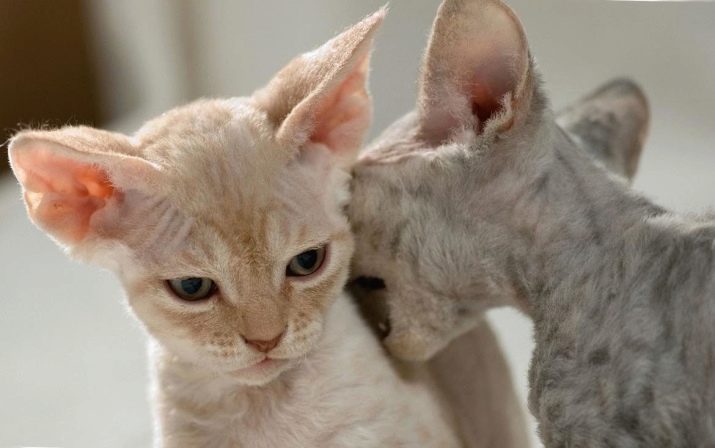
Siam Oriental Group
This group brought together pets without an undercoat. The homeland of cats of the Siamese-Oriental group are warm countries. In other words, it does not shed them that the ancestors who lived in a warm climate did not need to change their fur. This genetic feature has been preserved in the modern caudate of this group. As a rule, these cats have a graceful elongated body, muscles and dexterity. Outwardly, they resemble their ancestors - wild cats. This group includes:
- Siamese cats
- abyssinian cat;
- Orientals
- Thai cat
- Mekong Bobtail;
- Scythian tai dong;
- Burmese
- balinesis.
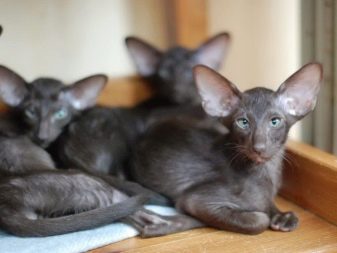

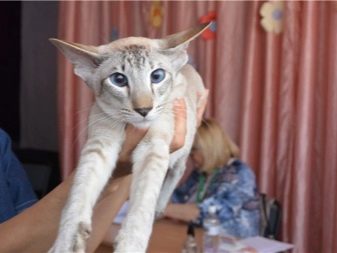

Representatives of all these breeds, with the exception of the Siamese, are distinguished by an inquisitive and friendly character, activity. Siamese cats cannot be called evil or aggressive, however, due to the anatomical features of the skeleton (“defects” of the spine and tail), the pet can often be irritable and vengeful. The remaining hair falls out unnoticed, and due to the lack of undercoat for fur, minimal care is required. He does not slide into tricks.
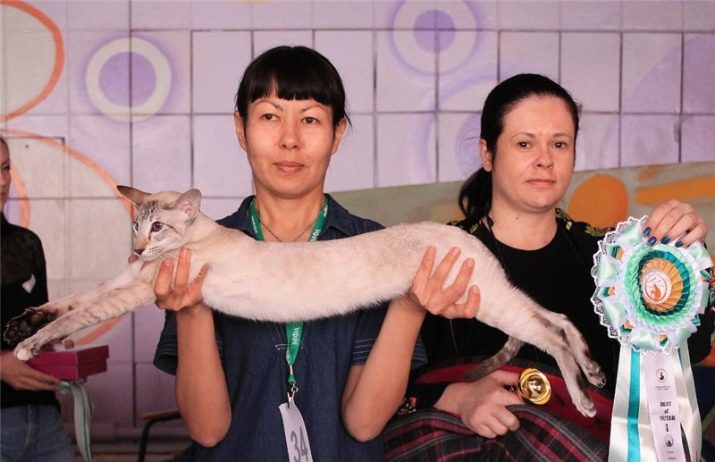
The cats examined practically do not fade, however, if this happens, you should contact your veterinarian. This can signal a pet's stress (often its effects do not immediately appear, but after a few months), hormonal failure, or another pet disease.
Russian blue
This cat breed is one of the most sought after. And all thanks to the fantastic appearance and incredible character. The animal has a natural origin, unusual color and is distinguished by devotion to the owner, kindness, paternal attitude to the younger members of the family. Despite the presence of thick undercoat, Russian blue is not prone to molting. Besides, the animal neatly and independently copes with the task of caring for its fur coat.
Cat hair is considered hypoallergenic. Due to the structure of the hair, it is not susceptible to destruction, and bacteria do not settle on it. Due to the reduced fragility of the hair, the cat sheds throughout the year, but imperceptibly. Longer hairs fall out, the undercoat remains almost unchanged.
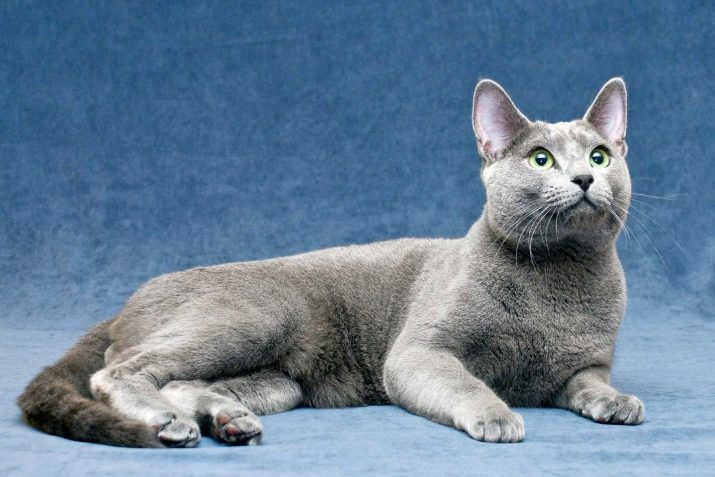
You can preserve the beauty of the fur by avoiding frequent washing and combing of the pet. Chemical compositions for grooming are also prohibited.
Nibelung
Rare breed of cats in our country. Outwardly, it is similar to Russian blue, but it is not short-haired. Nibelung has a semi-long fur, otherwise the hair structure is no different from the structure of blue. Knowing this, it is understandable why the Nibelung also refers to shedding cats.

Bengal
Amazing in beauty, intelligence and dexterity cat. And this is not surprising, because the ancestor of bengals are Asian leopard cats. Bengals are the result of a cross between a domestic and wild cat. A feature of bengals is that a week after birth, phasing begins. This process involves an increase in the length of the hair of the undercoat. The undercoat becomes longer than the outer hair, so the bright spotty color seems to be covered with a darker veil.
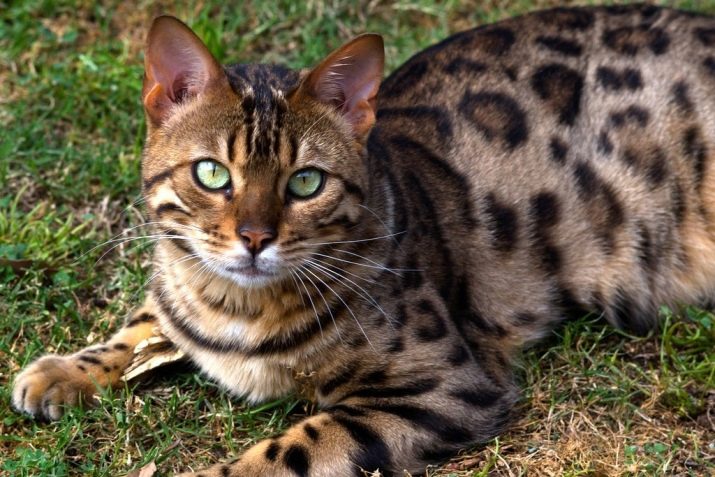
In nature, Asian cats practically merge with nature, and phasing is necessary so that defenseless cubs are safe and not become prey of predators. For home bengals, the phasing process may not be so pronounced, their fur usually just becomes unattractive (excessively fluffy, dense, the “signature” color is lost). The kitten grows, becomes more and more independent, strong, fearless.
During this period (usually 4–9 months), the bengal's undercoat falls out, it becomes smooth, shiny, and an exquisite pattern appears. The pet does not grow more undercoats, and from then on it can be considered a non-shedding cat.
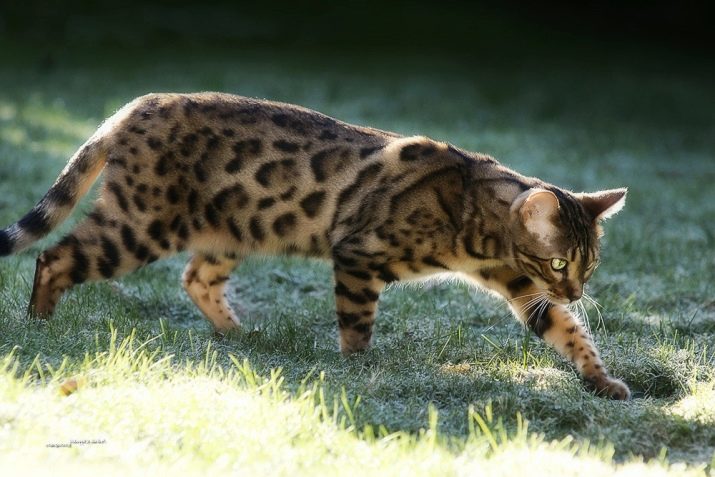
How to care for them?
It is difficult to identify some general principles of care, since each breed has specific requirements. For example, rex and sphinxes have large ears that need to be cleaned regularly. Many short-haired animals and starving sphinxes spend a lot of energy on heating, therefore, they especially need a balanced diet. Moreover, cats do not have a feeling of satiety, they can still beg for tidbits for a long time already at the end of the meal.
With regular overeating, pets face obesity, heart problems, and liver problems. The starved sphinxes freeze even at a temperature of + 22–23 ° C. In this case, they need to purchase special clothing.The sunbed should also be insulated. Cats of this breed love to bask in the sun, this is useful for the animal - the only thing that the owner needs to ensure that the pet does not receive heat stroke.
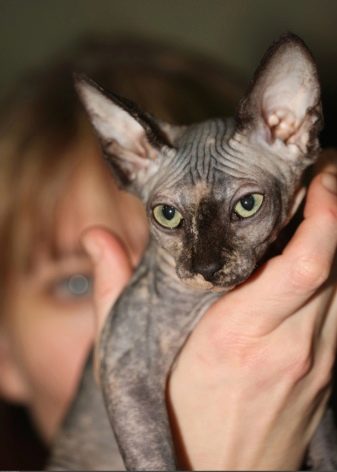
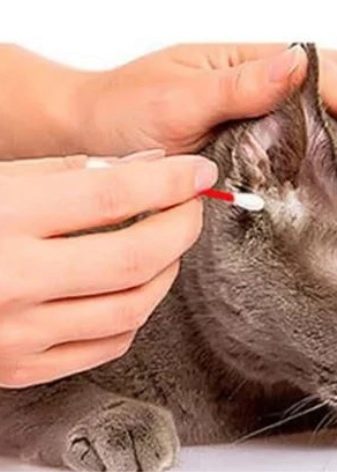
It is not necessary to comb the sphinxes. During molting, the velor varieties can be drawn along the animal’s fur coat with a slightly wet hand.
Rex needs to be combed, but infrequently. On average, once every one and a half to two weeks. For these purposes, a soft natural brush is suitable. You can also purchase special wet wipes. You can’t use ordinary ones, because the animal will begin to lick itself and get poisoned. During molting, the number of combing should be increased - once a week will be enough. Rex is bathed every two months, while it is important to choose a delicate shampoo, as the skin of animals is prone to irritation.
Experienced breeders suggest using shampoos for hairless animals. Drying your pet with a hairdryer after bathing should not be - this is fraught with excessive dryness of the skin and its further irritation.
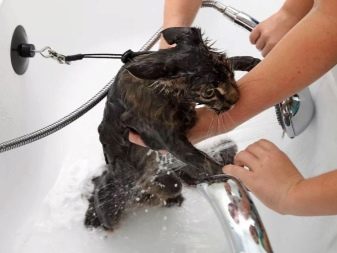
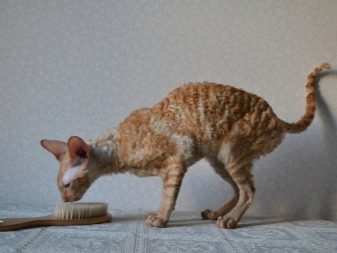
Rex have small paws, so excessively long claws give them a lot of inconvenience. Sometimes they do not even completely hide in the pillow, so as the claw grows, you need to cut it with a special clipper. An important point is to cut off only the transparent part of the claw so as not to damage the blood vessels and nerve endings passing through it. It is possible to reduce the amount of hair falling out during molting, if a month before the start of this process, give the cat a course to drink B vitamins and fatty acids.
It is important that the cat's nutrition is balanced, the necessary amount of animal protein is present. It is useful to grow oats or special grass for a cat. Greens will help maintain the required amount of trace elements in the body of the pet.
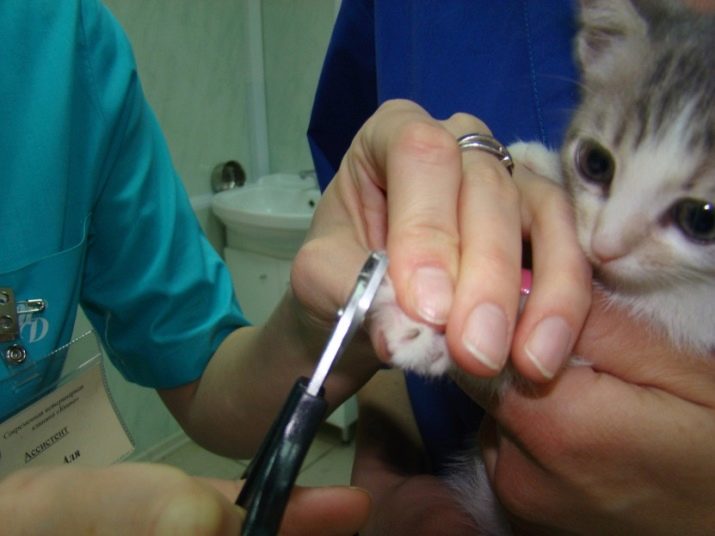
It is important to choose the right comb for caring for animals. Ideally, it should be a brush with natural bristles. A special glove is also suitable. But combing with sharp teeth should be discarded - they injure the skin of the animal, which contributes to even greater hair loss.
For how to properly care for cats that do not fade, see the next video.
